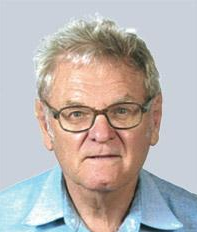Shale Petrophysics
OR
About the Course
AAPG members, view the course for free!
AAPG E-Symposium Series.The overall objective of this course is to review the petrophysics of shales and organic rich shale associated with carbonates. The course will review core data, petrophysical comparisons, rock physics modeling (including pseudo logs and mechanical properties).
You will learn:
- Basic Petrophysics: What do these logs reveal about shales?
- Porosity Logs
- Resistivity Logs
- Gamma Ray
- SP
- Interpretations – The Basics with a focus on shale
- Shale calculations
- Porosity calculations
- Resistivity/Porosity cross plots to solve Archie’s equation
- Influence of clays
- Saturation determination
- Permeability estimates
- Core Data/Petrophysical comparisons
- Porosity
- Fluid saturations oil/water/gas
- Grain density
- Permeability
- Core Shifting
- Core upscaling – to match log measurements
- Organic rich shale associated with carbonates
- TOC
- Shale petrophysical model
- Free vs. adsorbed hydrocarbons
- Rock physics modeling
- Pseudo logs to verify porosity log integrity
- Mechanical properties – brittle vs. ductile
For more lectures like this, join AAPG today
Your Instructor

Michael Holmes, with Digital Formation, Inc., Denver, CO, has a Ph.D. in Geology from the University of London and a M.Sc. in Petroleum Engineering from the Colorado School of Mines. He began his professional career with British Petroleum and then joined Shell Canada. Subsequently, he was a Research Scientist in Marathon's Denver Research Center. For a brief period, he was Exploration and Production Manager for Berry Wiggins in London. In 1974, Dr. Holmes joined H. K. van Poollen and Associates, Petroleum Consultants, as Vice President in charge of North American consulting activities. Additionally, Dr. Holmes was an instructor in a wide range of petroleum courses including geology, well logging, and petroleum economics. In 1978, Dr. Holmes established his own consulting practice, involving petrophysics, technical due diligence, consulting to the United Nations world-wide, expert witness activities, and instructor to IHRDC and the University of Brunei. In 1998, Michael combined consulting activities with software development, to form Digital Formation, Inc. From 1998 to the present, most of Michael's work has been petrophysical analysis and reservoir characterization in reservoirs world-wide. More recently, Digital Formation has developed extensive petrophysical algorithms including rock physics, capillary pressure, and the analysis of unconventional reservoirs.
